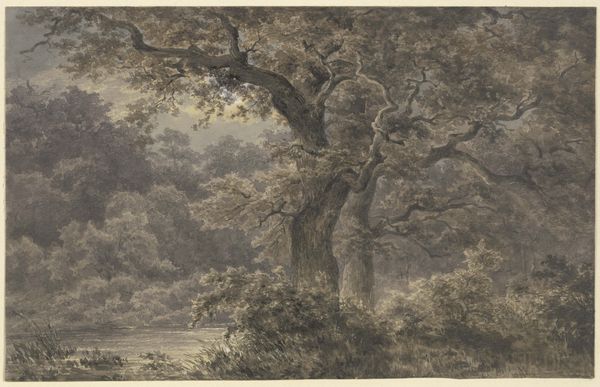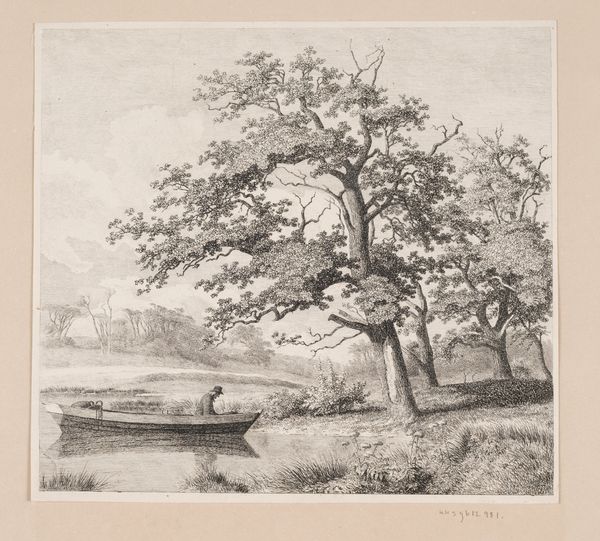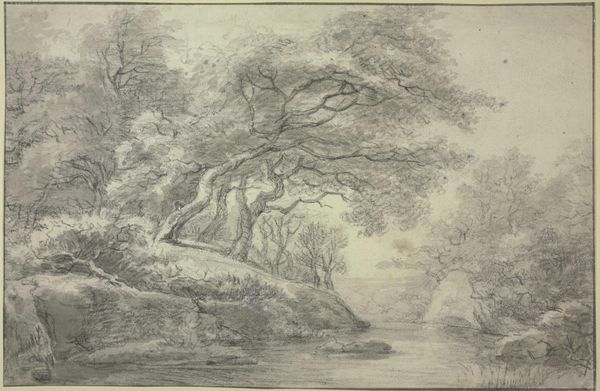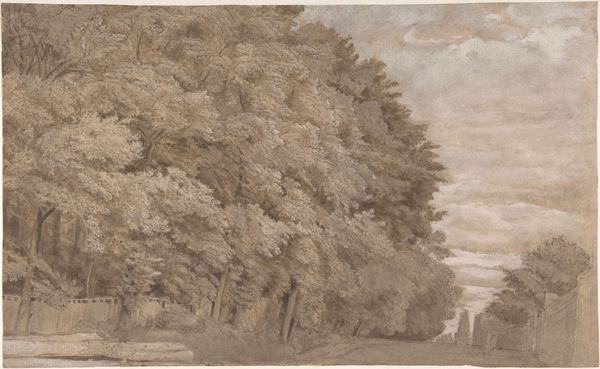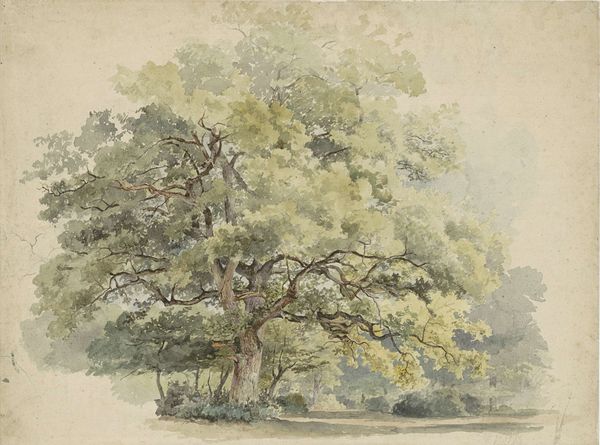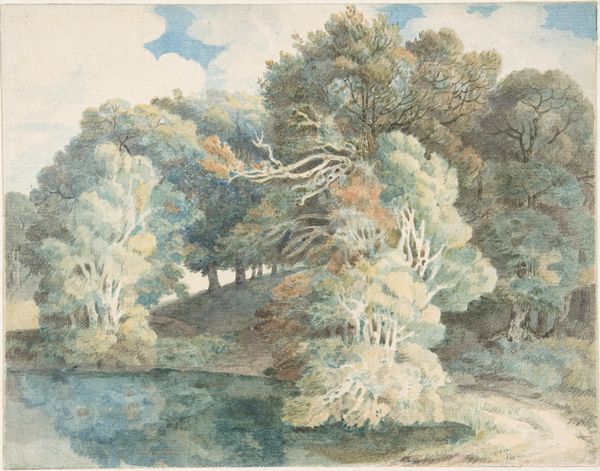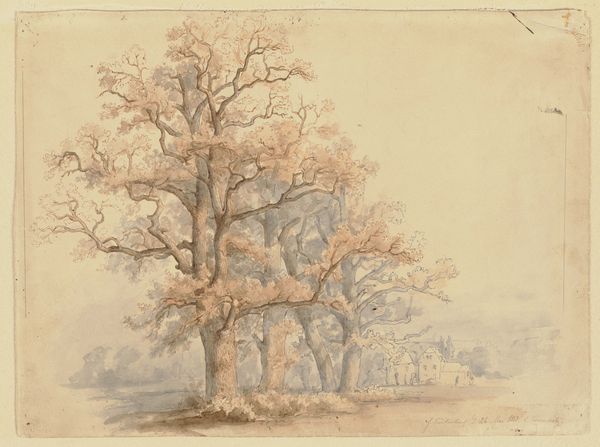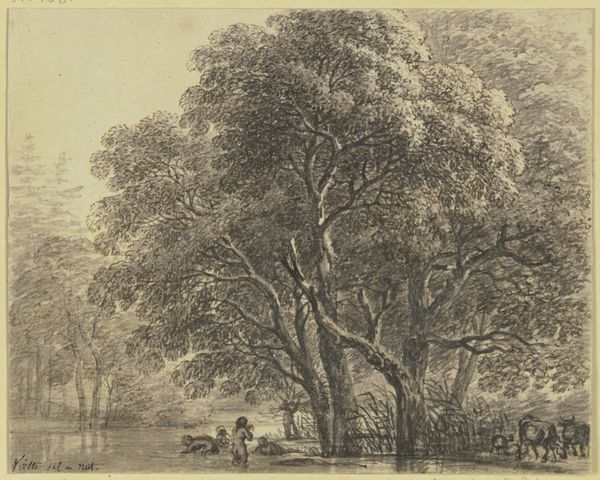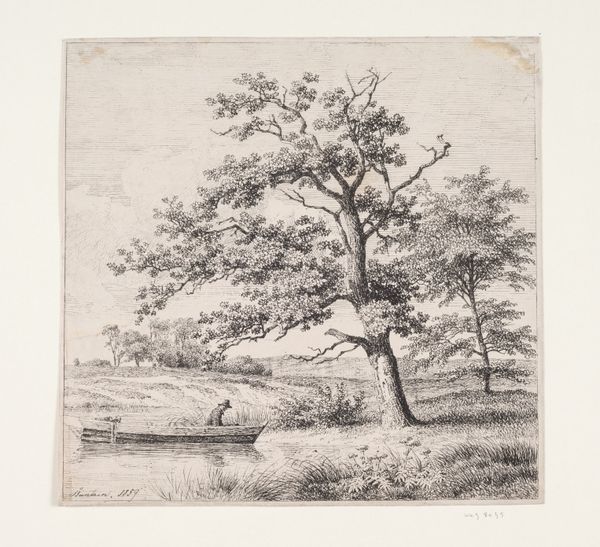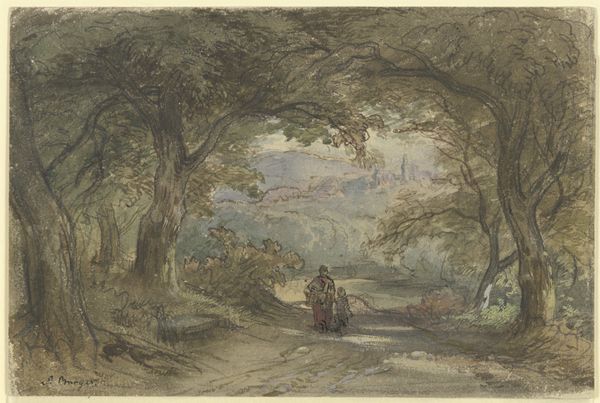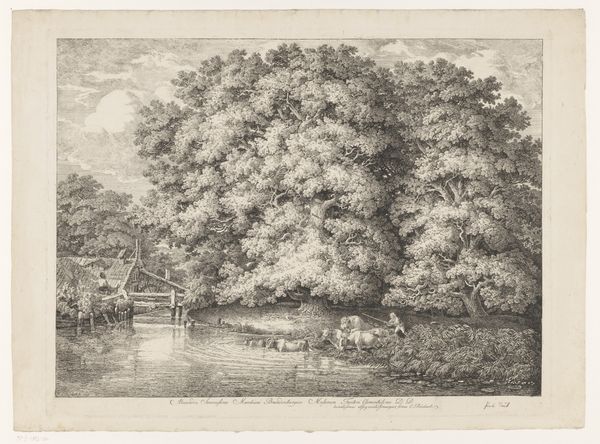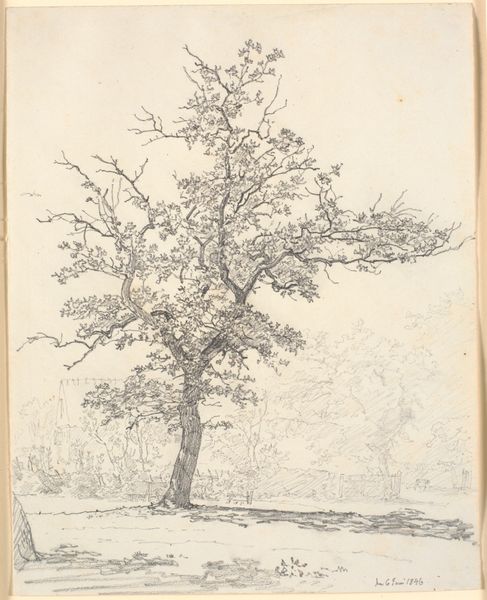
A Landscape with an Old Oak (or Beech) Tree 1791 - 1801
0:00
0:00
drawing, watercolor
#
drawing
#
water colours
#
ink painting
#
landscape
#
watercolor
#
romanticism
#
watercolor
Dimensions: Sheet: 7 1/2 × 11 7/8 in. (19.1 × 30.2 cm)
Copyright: Public Domain
Curator: Look at the dominating presence of the tree in this watercolor, ink and graphite artwork titled "A Landscape with an Old Oak (or Beech) Tree," created by Joseph Mallord William Turner around 1791-1801. It’s currently housed here at The Met. Editor: It has this somber yet hopeful quality. It makes me reflect on aging, fragility, and nature's capacity to outlive us. The subtle variations of color emphasize the passing of time in some ways, it feels very evocative, though somehow still… restrained? Curator: Yes, restrained, perhaps. Romanticism often intersects with a deep awareness of mortality. Turner situates this specific tree, with its imposing solitary stance in what appears to be cultivated grounds; suggesting, perhaps, humanity's relationship with an otherwise wilder nature. How it dominates yet blends in, like aristocracy itself at the time. Editor: I’m struck by the ambiguity. On one hand, you could say it is nature tamed, or perhaps nature allowed its dominance, regardless of who cultivated the area. What’s clear is Turner, through composition and light, asks questions regarding agency, in how he renders both nature and society. Who is really shaping whom? Curator: The sociopolitical landscape was fraught with such questions back then as well, as old systems started to crumble during the French revolution. Here you also feel how that tree is simultaneously powerful, a being almost beyond reckoning, yet utterly exposed, vulnerable, to any force that chooses to target it. A single lightning strike could undo centuries of growth. Editor: Absolutely, that precarious balance! And also that we as the audience are allowed this view, a literal surveying, like we too have some claim to the land. How complicit are we then in our relationship to nature and property, given that our own presence shapes that very relationship. What stories are being overlooked to allow for such a clear, sweeping landscape? Curator: A crucial point; those power dynamics are certainly embedded in Turner's choice of perspective and framing. And I see the same sentiment mirrored today in questions surrounding land access, ownership, and conservation efforts. What narratives do we choose to foreground in our contemporary dialogues around nature? Editor: Thinking through that complexity definitely makes experiencing this piece a layered journey. There are no easy answers, and to me that's the beauty of it.
Comments
No comments
Be the first to comment and join the conversation on the ultimate creative platform.
